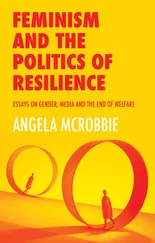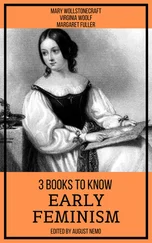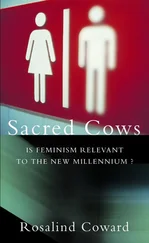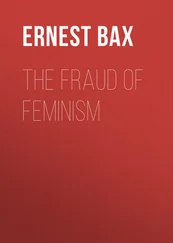Let it be noted, however, that the announcement of the death of that Man of Reason may have been exaggerated and that he may still be quite capable of multiple after-lives. The NASA-led explorations of outer space, for instance, adopted the Vitruvian Renaissance representation of that human as the badge for their missions. That image was therefore sewed onto the astronauts’ suits and has been flying on the flag that was planted on the surface of the Moon on 20 July 1969. As we shall see later, the project of human enhancement and intergalactic expansion is not necessarily incompatible with humanism.
The vicissitudes of philosophical critiques of humanism followed their own itinerary (Soper, 1986), intersecting productively, but not always necessarily coinciding with discussions about the status of the human in feminist, anti-racist, decolonial and Indigenous theories. There are several variations on the theme of humanism at stake within the feminist traditions, which are often oblivious to the lament about the crisis and decline of ‘Man’.
Feminist Liberal Humanism: Gender Equality
The status of the human is central to feminist, anti-racist, decolonial and Indigenous thought, basically foregrounding the highly contested question: how inclusive and representative is the idea of the human implicit in the allegedly universal humanist idea of ‘Man’? Can I, as a woman, Black, Indigenous, LGBTQ+ person, claim access to that humanist idea and ideal? Why were the sexualized and racialized others excluded in the first place? And how can I get included in so far as my exclusion was justified in terms of my alleged deficiencies and shortcomings in relation to the white, masculine ideal? If my exclusion is instrumental to the definition of that privileged subject position and I am the constitutive outside of ‘Man’, how can I ever hope to be included? If the excluded, disqualified and deselected others want to be included, the dominant image of ‘Man’ must change from within. Equality is not about sameness. And to be different-from does not have to mean to be worth less-than.
Feminist and anti-racist critiques of the idea of a common undifferentiated humanity and the claim to humanist universalism, were raised from the eighteenth century onwards, for instance by Olympe de Gouges (1791) on behalf of women, and by Toussaint Louverture (2011) on behalf of enslaved and colonized people. They both reacted against the flagrant violation of the very human rights asserted in the French Universal Declaration of 1789. They criticized respectively the exclusion of women from civic and political rights and the inhumane violence of slavery and colonial dispossession. All claims to universalism lose credibility when confronted by such abuses of power. Both de Gouges and Louverture paid a heavy price for their daring: Olympe was promptly dispatched to the guillotine while Toussaint was deposed by the French imperial army. So much for universal brotherhood – and of sisterhood nothing more shall be said for a few centuries (Morgan, 1970).
The humanist motif that women’s liberation is human liberation, and that women’s and LGBTQ+ people’s rights are human rights, is an empowering humanist mantra with an instant emotional and intellectual appeal. The same message, ‘women’s rights are human rights’, was proclaimed by Hillary Clinton at the United Nations ‘Fourth World Conference on Women: Action for Equality, Development and Peace’ in Beijing, China, in 1995, and was reiterated during her unsuccessful presidential campaign. They are echoed on a planetary scale by multitudes of women and LGBTQ+ people, dehumanized people of colour and colonized others, whose humanity was historically not granted. And yet they carried on and built their worlds. From Mary Wollstonecraft’s A Vindication of the Rights of Women , to Sojourner Truth’s ‘ain’t I a woman too?’, from the Riot Girls to Pussy Riot, via the Guerrilla Girls and the cyberfeminists, the Xeno feminists, the Gaia ecofeminist activists, and multiple others, the humanist aspiration to dignity and inclusion proves inspirational.
Liberal feminists trust the liberating powers of the capitalist market economy to achieve these aims, but are also driven by a social conscience and a sense of responsibility, as one of its historical figures, Betty Friedan, argued in 1963. Feminist politics, in this view, is about organization and procedural tactics to correct a flexible social and economic system that is open to improvements. An underlying optimism supports the political gradualism of the liberal branch of the feminist movement: egalitarian changes will come and equality will eventually be achieved if women and men work towards this goal. Patriarchal power is not a structural notion for liberal feminism, the focus being the unfair distribution of power positions and relations between individualized men and women. The emphasis falls entirely on individualism and personal empowerment.
Many twentieth-century feminists took a more radical stand and were sceptical of the lofty liberal humanist ideals, as they were unequally implemented in world history. This resulted in the systemic exclusion of those who did not conform to that dominant norm. The injustice of these violent exclusions led the disqualified others to question the norm and reject the discriminatory practices, on the basis of their lived experience. They called humanism to account over and over again. Their rebellions voiced the concrete demands and the political urgency of specific empirical referents such as women, LGBTQ+ people, Black, decolonial and Indigenous subjects. But their critique also contained blueprints for the improvement of the human condition as a whole. They produced counter-notions of the human and of humanity, in non-masculinist, non-anthropocentric, non-heteronormative and non-Eurocentric terms. In other words, they acted as feminist, cross-species, gender non-conforming, polysexual and planetary subjects.
Feminist critiques of patriarchal posturing were formulated, in the wake of Beauvoir, by key philosophers like Alison Jaggar (1983), Genevieve Lloyd (1984), Jean Grimshaw (1986), Sandra Harding (1986, 1991), Hill Collins (1991), Jaggar and Young (1998) and many others. The allegedly abstract ideal of ‘Man’ as a symbol of classical humanity was brought down to earth and revealed as very much a male of the species. As the French poststructuralist feminists claimed: it is a he (Irigaray, 1985a [1974]; Cixous, 1986). Or rather, as we read in the epigraph to this chapter in Gertrude Stein’s merciless words: ‘He he he he and he and he and and he and he …’. The triumph of this abstract masculinity (Hartsock, 1987) entails the erasure of the feminine, especially as embodied by women (Irigaray, 1985b [1977]) and LGBTQ+ people. More recent feminist criticism of the limitations of European humanism aims at delinking the human subject from the universalistic posture and debunking his narcissistic delusions of grandeur (Braidotti, 1991, 1994). As late as 2007, MacKinnon raised the question ‘are women human?’. Although MacKinnon’s definition of women was criticized for implying almost exclusively white, middle-class females (Harris, 1990) and upholding a unitary category of women (Braidotti, 1991, 1994; Butler, 1990, 1997), it remains a highly relevant question. Feminist phenomenologists were especially vocal in rejecting universalism (Sobchack, 2004; Young, 2004) by emphasizing the carnal nature of thought, and racialized theory in the flesh (Moraga and Anzaldua, 1981), and hence the embedded and embodied structure of subjectivity (Braidotti, 2011a, 2011b).
This particular vision of the human as male and white is, moreover, assumed to be European, a full citizen of a recognized polity, head of a heterosexual family and legally responsible for its children (Deleuze and Guattari, 1977, 1987; Braidotti, 1994). And finally, ‘he’ is also able-bodied and handsome, according to the Renaissance parameters of Vitruvian symmetry and aesthetic perfection (Braidotti 2013), as critical disability studies point out (Shildrick, 2002, 2012; Goodley et al., 2018; Murray, 2020). Feminists refuse to reduce feminism to homologation or integration into this Eurocentric masculine standard of sameness and offer more situated and hence more accurate analyses of the power relations upheld by the humanist paradigm.
Читать дальше












